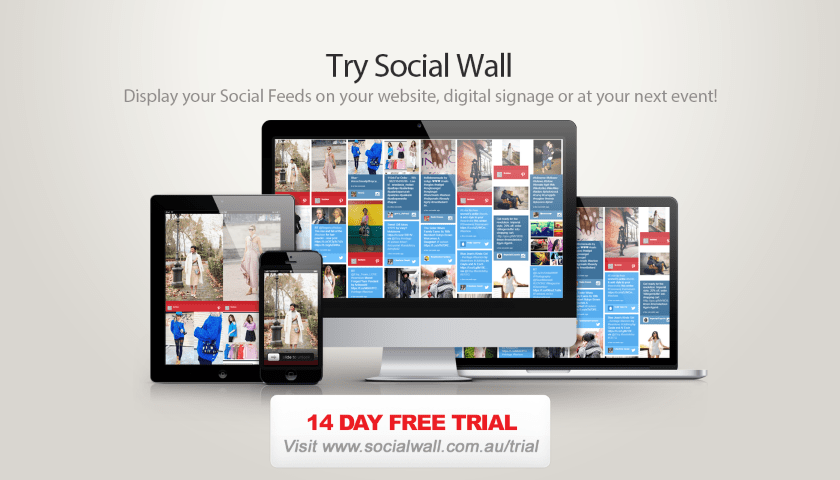Guest Posts
Guest Post: Technology and Consumption: Digital Signage Green Considerations
Written by Guest Blogger: Sean Matthews
Businesses around the world are starting to look at ways to reduce their carbon footprints and do their part in becoming part of the solution, instead of continuing to contribute to the problem.
In good faith, we can’t make the claim that using digital signage will save the earth, yet it can be an important first step in being responsible members of society and stewards of the planet. Think about the following topics when you consider how your organization will fit into the new green economy – digital signage systems help drastically reduce paper usage and some digital signage products also have device control options for managing your energy use.
Using modern technology to change the culture
Obviously, getting your messages out to audiences using a digital signage system requires less paper than traditional methods like bulletin boards, posters, banners, printed newsletters, mail, flyers and so on. One benefit of meeting room signage that is not often considered is the amount of paper saved. A recent study states that digital signage consumes 7.5% less carbon than posters.
Digital messages are just that: digital. They do not use paper – so no trees are cut down; no water, inks or solvents are used; and when the message is no longer relevant, it doesn’t go to a landfill to decompose and emit methane, but is simply deleted.
There are many examples of organizations that use digital signage to reduce their overall paper usage. The University of Virginia was approached by a concerned student body to find a digital, paperless solution for student organizations to get their messages out on campus. “We have a generation of environmentally conscious students who wanted a sustainable way to deliver information,” says Bill Ashby, Associate Dean of Students and Director of Newcomb Hall and Student Activities. “If you want to use more environmentally sustainable methods to reach students, you basically have two options. The first is punitive – you know, ‘No Posting!’ and then going after violators. The second is to use modern technology to try and change the culture. That’s what we decided to do.”
Device control – an ON/OFF switch at your desk
Not using paper is certainly a major benefit of a digital signage system, but such systems still use electricity generated by power plants that pollute and emit greenhouse gases. In the United States, electricity generation accounts for nearly 40 percent of emissions, the largest of any source. A display that is left on consumes power and often we would rather not take the time to walk around shutting them off when they aren’t being used.
Some browser-based digital signage software allows users to access endpoints from a browser interface and manually control display functions and schedule on/off cycles. They use the interface to schedule displays to turn on when their audience is likely to be around to see your messages and turn them off when they aren’t.
For a medium-sized digital signage deployment of 16 large-screen displays, you can potentially reduce your carbon footprint by nearly 27,000 pounds of CO2 a year, the equivalent of replacing 180 regular light bulbs with compact fluorescent bulbs. “Depending on the size of the deployment, users can annually recognize hundreds or even thousands of dollars in potential energy savings by turning displays off when not in use,” explains Trey Hicks, Chief Sales Officer for Visix, a company that develops software for digital signage. “Not only can users help reduce carbon emissions, but they can extend the life of their displays and reduce the likelihood of image retention.”
Device control not only helps your displays last longer and reduce the amount of carbon equivalent your organization emits through energy usage, it helps reduce the amount of power that needs to be generated at all. Buildings use around 40% of all energy consumed in the US, and 70% of total electricity – all of which must be generated by energy plants that emit large amounts of CO2 and carbon equivalent.
Rick Duke, director for the Center for Market Innovation at the National Resources Defense Council, suggests that while we are waiting for cleaner power generation from renewable sources to take over the majority of our power needs, we can create “an efficiency surge” now to help mitigate continued growth and demand for energy while not adding any new carbon molecules to the atmosphere.
Higher energy efficiency benefits not only your company, but everyone – your local community, your country, and the world as a whole.
About the Guest Blogger:
LIKE WHAT YOU'VE READ?
When you subscribe you will also join other Digital Signage readers who receive our content right in their mailbox. Good luck!







LCD displays are one of the best ways to advertize your campaign, product or business. The major advantage of using LCD signage is they are Eco friendly and are easy to install. Moreover, a single LCD signage is capable enough of running many ads, one after the other.